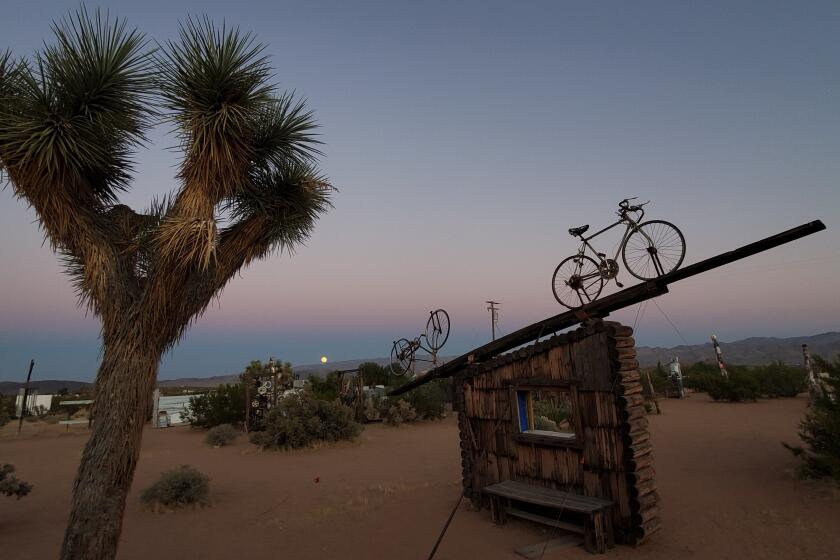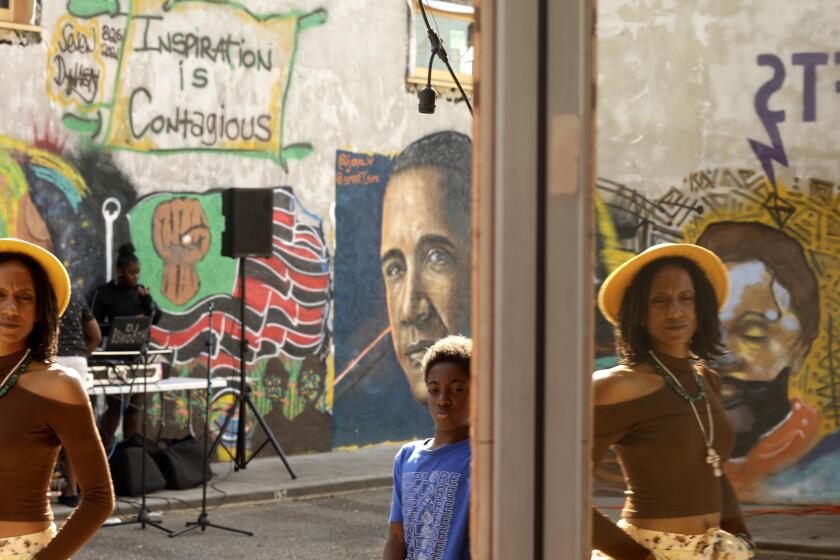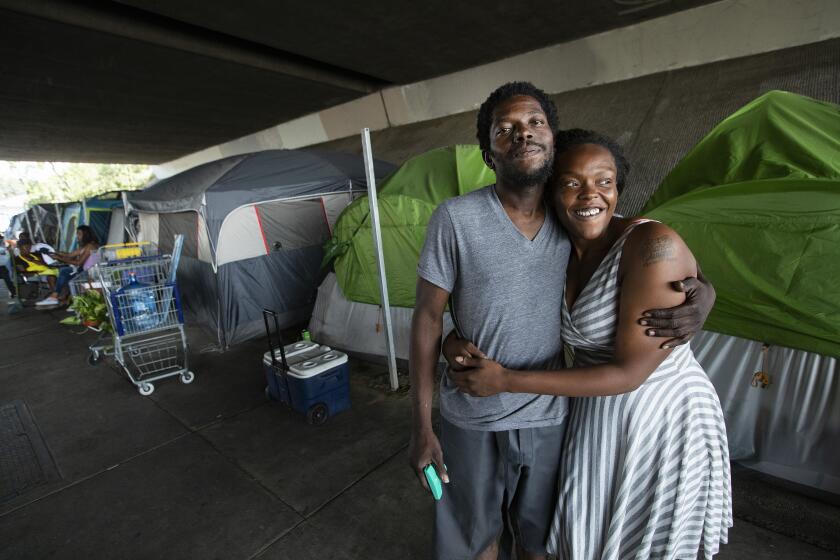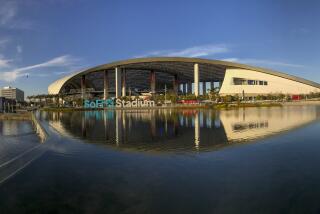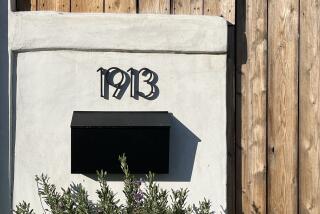Black population continues to grow in suburbs and shrink in cities across the U.S.

A longtime area staple with its wagon wheel décor and “Roy Rogers ribeye,” the Ranch Steak House is fighting to reopen as one of the last sit-down restaurants in the once-flourishing Black Chicago neighborhood of Roseland.
About 13 miles away, near Indiana, Christopher Cain and his wife, Deja Cousins-Cain, sought a new market for their wine bar that promises “Good Vibes Only,” settling on the suburb of Lansing, Ill., where growth has included a steady increase in Black residents.
The two enclaves of roughly 30,000 people reflect how Black migration patterns in the 21st century are changing the makeup of metropolitan areas nationwide. For decades, Black residents have been leaving some of the nation’s largest cities while suburbs have seen an increase in their Black populations. Those two trends have now spread to even more areas of the country, according to the 2020 U.S. census.
The patterns echo the “white flight” that upended urban landscapes in the 20th century. Like those who left cities before them, Black residents often move out because of worries about crime and a desire for reputable schools, affordable housing and amenities. But there are key differences: Leaving Black city neighborhoods that are starved for investment is often more of a necessity than a choice, and those who do settle into new suburban lives often find racial inequities there, too.
From 1990 to 2000, 13 of the United States’ biggest cities lost Black residents. By 2020, it was 23. According to the census, roughly 54% of Black residents within the 100 biggest American metro areas were suburbanites in 2020, up from 43% two decades ago, according to Bill Frey of the Brookings Institution.
While Los Angeles, New York and Philadelphia all lost Black residents from 2010 to 2020, the change was especially notable in Chicago, which gained population but lost 85,000 Black inhabitants, the highest number after Detroit, according to the 2020 census. Those numbers could end up varying slightly, as the Census Bureau reported last week that 3.3% of the Black population was undercounted in the 2020 census, a rate higher than in 2010.
“Them: Covenant” on Amazon Prime is a reminder of the all-too-common housing covenants that restricted who could buy homes in certain neighborhoods in Compton, around Southern California and elsewhere. Determined Black people over the decades fought for their rights to live where they pleased.
The official count found that a section of Roseland measuring less than one square mile lost 1,600 Black residents. Now, the area near where former President Obama was a community organizer — located about 20 minutes south of downtown Chicago — doesn’t even have a grocery store. That makes Judy Ware, who bought the Ranch restaurant in 2018, more determined to hang on.
“We take pride in trying to keep this institution in the neighborhood,” she said. “It’s needed.”
For others, though, the suburbs offer a fresh choice.
Cousins-Cain and her husband surprised themselves in choosing Lansing, which wasn’t always friendly to Black people.
“We’re here to stay”: Black Californians put down roots in the desert
Settled by Dutch and German immigrants, the city has seen a roughly 50% increase in its Black residents, who now represent almost half the population. Lansing recently elected its first Black trustee.
“It just feels like we are finally getting an opportunity to bring something to the table and bring something to the conversation,” Cousins-Cain said.
The trends are nuanced. Black residents are continuing to move to Southern cities in a reversal of the Great Migration, a movement that began in the 1910s and resulted in millions leaving the South for northern cities to escape discrimination. But more recently, some of the starkest changes are happening within metro areas as suburbs of major cities see Black population growth.
Black residents, who represented roughly 40% of Chicago’s population in 1980, now make up less than 30%. Their presence increased, meanwhile, in dozens of Chicago suburbs from 2010-20.
Construction of the U.S. Interstate Highway System tore through the nation’s urban areas with freeways that, through intention and indifference, carved up Black communities
Chicago, long a segregated city, continues to report disparate outcomes by race when it comes to home ownership, income, transportation access and more. In Roseland, residents note persistent crime, delayed city services and a train line that ends at Roseland’s northern edge. Worries persist about population loss diluting Black political power as drafts of a political remapping show fewer majority-Black wards.
In the section of Roseland that lost more than 1,600 Black residents, the school sits vacant, a green “For Sale” sign out front. It is among the roughly 55 schools targeted by former Mayor Rahm Emanuel in the nation’s largest mass school closure. Many said those issues forced them to leave.
Kisha Pleasant, 41, bought her first home in Roseland, but violence and dwindling amenities pushed her out.
“I can’t retire in this area,” she said. “I want to come outside, and I don’t want to be scared that somebody will be shooting at me.”
News Alerts
Get breaking news, investigations, analysis and more signature journalism from the Los Angeles Times in your inbox.
You may occasionally receive promotional content from the Los Angeles Times.
Last year, she moved to Lansing. The growing Black population there prompted Micaela Smith, who moved to Lansing in 2002, to seek office. She became its first Black trustee last year, after a challenging campaign in the predominantly white suburb.
“I had to do more persuasion to convince the voters,” Smith said.
Activists say Lansing has had its fair share of issues involving race. In 2017, a Black teenager was held down and threatened by a white off-duty police officer, a confrontation that led the city to enter a memorandum of understanding with activists and the U.S. Department of Justice.
Pastor David Bigsby, of In the Upper Room Ministries, recently held a community call about disproportionate traffic stops, noting that a major thoroughfare largely divides Black and white residents.
Sky-high housing prices, two new zoning laws and the sale of Baldwin Hills Crenshaw Plaza could be a tipping point for historically Black neighborhoods.
“It’s still segregated in town,” he said.
Still, the 76-year-old, who moved into the parsonage six years ago, has about 250 congregants now, an increase of about 20%.
Roseland residents who remain take pride in Obama’s work there, and say they’ve seen signs of a turnaround.
Chicago officials recently launched a $750-million program to improve neglected neighborhoods, including Roseland, and have detailed plans for a train line extension. The Greater Roseland Chamber of Commerce hopes a community hospital will grow into a medical district.
Los Angeles is starting to address the forces behind the racial disparity in the city’s homeless population. It would be hard to find a purer example than an encampment of black people who live under a freeway in Pacoima.
Ware, the steakhouse owner, is preparing to resume table service at her restaurant — which has been operating for more than 50 years — after struggling through the COVID-19 pandemic. After renaming it Ware Ranch Steak House and installing new flooring and orange booths, she is feeling optimistic as she prepares to reopen this month.
“If we can weather the storm, I think we’ll come out good on the other side,” she said. “There is a lot of stuff waiting to happen in Roseland.”
More to Read
Start your day right
Sign up for Essential California for news, features and recommendations from the L.A. Times and beyond in your inbox six days a week.
You may occasionally receive promotional content from the Los Angeles Times.

